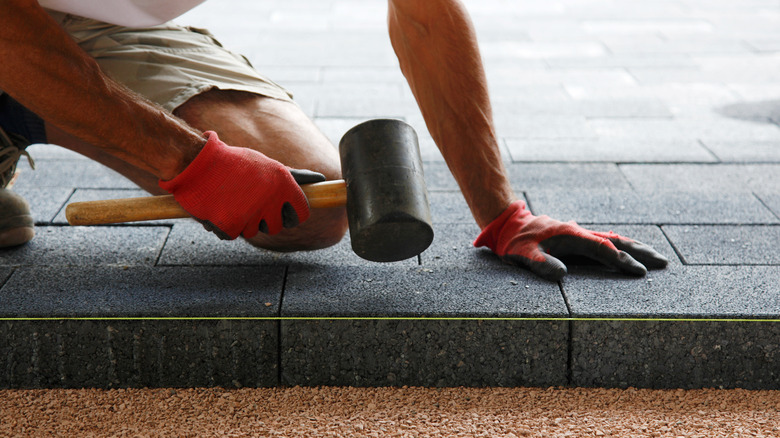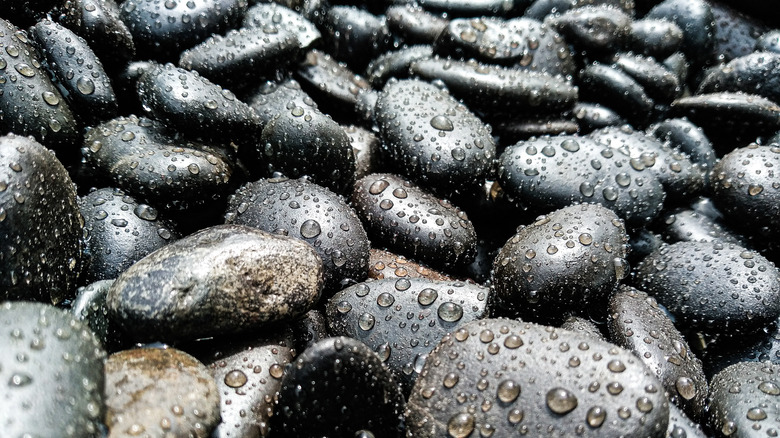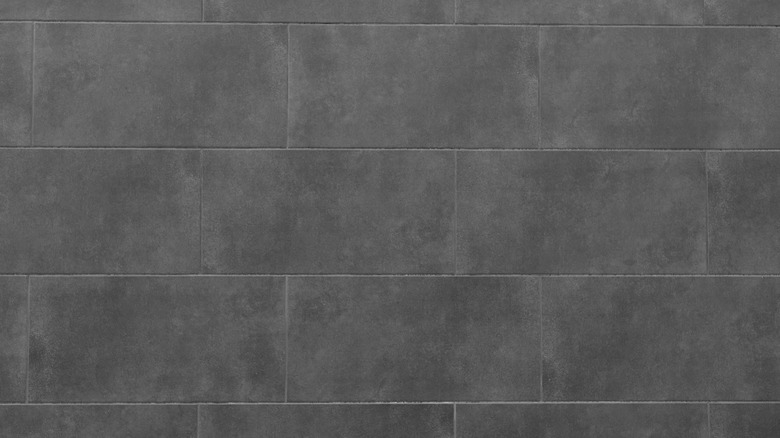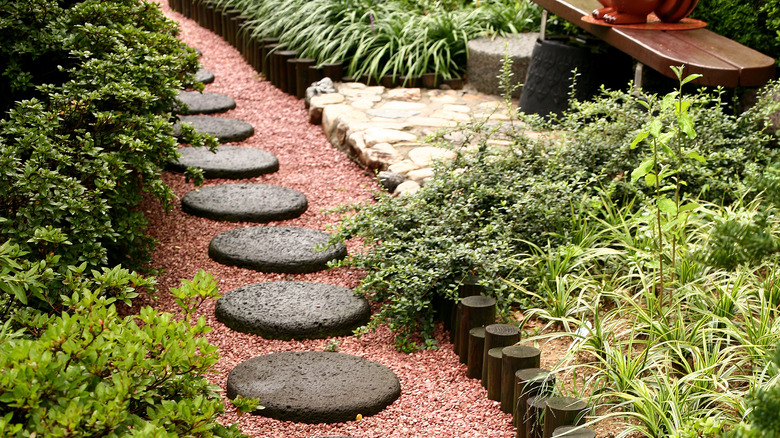How To Know If Basalt Flooring Is Right For Your Space
As a popular flooring choice, you can find basalt underfoot in kitchens, bathrooms, entryways, and patios. Where does basalt come from, and why are so many people using it in their homes? Basalt is molten lava that has cooled and solidified. In fact, 90% of the world's lava is made of basalt, per Vedantu. It is rich in iron and minerals, light or dark grey, and has been used for centuries in ancient architecture. It can be contemporary and sleek on the floor of a living room, or it can look textured and rustic on a patio. Wherever basalt is laid, it adds a simple and natural aesthetic to a home, conveying a sense of timeless beauty.
Basalt is reasonably priced and easy to attain through most flooring suppliers — no pickaxe required! The key to proper installation, says Solistone, is to seal the tile on top and underneath before it is put in place. Sealing the tile once again after it has been installed is also recommended, and this process will protect the stone from discoloration and preserve its natural appearance. It can be cut into small mosaic tiles or maintained as large slabs for high-traffic areas. But is basalt flooring right for your space? Here are the reasons basalt should be the natural stone you choose for your next flooring project.
Basalt is durable
Durability is key when choosing a flooring material. When it comes to natural stone, there are many stylish options available, but it's important to know how well your selection will fare under the wear and tear of daily use. Basalt translates to "hard stone" in Latin, and it's one of the most durable choices of flooring available, per Baltic Stone. It ranks seven on the Mohs Hardness Scale, a measurement tool that analyzes how hard a material is compared with other natural stones. According to Regatta Universal Exports, this score is higher than slate, marble, and travertine. As a natural stone, it is porous and will absorb stains unless sealed and protected. But with proper care, basalt flooring can withstand daily traffic without risk of scuffs, scratches, or fractures.
Not only is basalt able to withstand abrasion, but it can also weather the elements, via Stonewrap. Once properly sealed, it is water-resistant and not slippery on wet floors. As a volcanic stone, basalt can tolerate an extensive range in temperature without cracking. It is a natural insulator, so it can help interiors feel cool in the summer and warm in the winter months.
Basalt comes in many finishes
Whether you're looking for a sophisticated look or a more natural feel, basalt can be refined to produce a variety of textures. The finish you choose will enhance the area where you lay the flooring, per Stone & Tile. Basalt flooring that has been honed means that the rougher top layer has been polished to reveal a smooth and shiny finish. While maintaining its durability, a honed finish has a more refined and polished look. The flamed and waterjet finish introduces subtle shades of gray and copper throughout the stone. These finishes are skid-resistant and excellent for high-traffic areas such as kitchens, bathrooms, and entryways.
A brushed finish evokes the appearance of basalt tile that has naturally been worn down over time. This look is achieved by passing a wire brush over the stone, and the brushed technique creates a slightly more weathered appearance. If you're looking for a finish with a lot of texture, the chiseled finish leaves the basalt stone with a grooved surface. This rough-hewn appearance adds a lot of interest to an area and introduces a natural element that will complement your décor.
Basalt works indoors and outdoors
As a natural stone, basalt introduces a beautiful organic element into the design of your home, both inside and outside. Arrange hexagonal basalt tiles into a mosaic floor design in a bathroom to create a modern twist on a traditional style, per Stone & Tile. Or consider pairing basalt tile in a living area or kitchen with other contemporary elements for a sophisticated and modern feeling. It can also be contrasted with vintage items and softer textures for a more rustic, earthy vibe.
In the outdoors, crushed basalt can fill spaces between large flagstones, adding interest and contrast, according to Stone Universe Inc. Large slabs of basalt, polished to a brilliant finish, can serve as steps leading down into a patio space. Use basalt cobblestones to create a charming pathway through the garden, inviting one to explore. Following a basalt path will open new avenues of creativity for you to experience in your own retreat.



